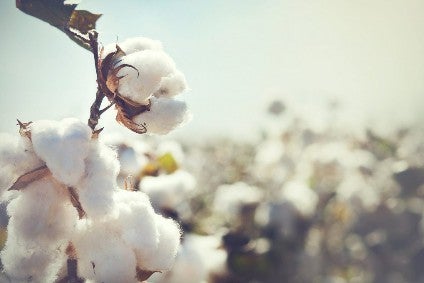
The Better Cotton Initiative (BCI) says cotton produced in line with its Better Cotton principles and criteria now accounts for 19% of global cotton production, with 2m licensed BCI farmers having produced 5.1m metric tonnes of Better Cotton in the 2017-18 cotton season.
Published yesterday (6 June), the BCI 2018 Annual Report reveals the group is getting ever closer to its goal of Better Cotton accounting for 30% of global production by 2020.

Discover B2B Marketing That Performs
Combine business intelligence and editorial excellence to reach engaged professionals across 36 leading media platforms.
As it moves closer to mainstreaming Better Cotton, the focus will move to developing its strategy beyond 2020 with the BCI Council and Executive Group working on putting together the next phase of the strategy and crafting a plan towards 2030, which will be unveiled in November 2019. BCI is currently organising a widespread consultation during the first half of 2019, and all BCI stakeholders will have opportunities to contribute.
The initiative is also striving to align its ambitions with the UN’s 2030 sustainable development vision.
BCI is a non-profit that promotes better standards in cotton farming and practices, with partner retailers including H&M, Gap and Levi Strauss. Its annual report celebrates the achievements of BCI farmers, partners, members and stakeholders from around the world.
Globally, production of Better Cotton increased by 50%, compared to the 2016-17 cotton season, the report states. Production of Better Cotton increased in almost all BCI Programme countries – nearly or at least doubling in India, Pakistan, South Africa, and the USA. In India, for example, Better Cotton production rose by more than 75% from 325,000 tonnes in the 2016-17 cotton season to 572,000 tonnes in the 2017-18 cotton season.

US Tariffs are shifting - will you react or anticipate?
Don’t let policy changes catch you off guard. Stay proactive with real-time data and expert analysis.
By GlobalDataIn total, 2m licensed BCI farmers in 21 countries produced 5.1m metric tonnes of Better Cotton, which accounts for 19% of global cotton production.
While 360 farms in the US produced more than 245,000 metric tonnes of Better Cotton lint – 5% of all US cotton production.
“The exponential increase in Better Cotton production in India shows great progress,” said Rajeev Baruah, head of smallholder programmes at BCI. “In the 2017-18 cotton season, India was the largest cotton producing country worldwide, with almost 9m smallholder cotton farmers.”
Meanwhile, together with its 69 on-the-ground partners and with support from 1,4000 members, BCI provided training on sustainable agricultural practices to more than 2m cotton farmers in 21 countries (more than 99% of BCI farmers are smallholders, farming on less than 20 hectares of land) in the period. This drove the volume of more sustainably produced cotton available on the global market to a new level.
By 2020, BCI aims to support 5mn cotton farmers in adopting more sustainable agricultural practices and improving their livelihoods. To do this, it focuses on the diverse social, environmental and economic challenges faced by cotton farmers around the world, from drought in Australia to flooding in China and gender equality in Pakistan.
“Our comprehensive programme of training, practical demonstrations and knowledge-sharing helps farmers to raise their yields, reduce their impacts on the environment and improve working conditions. We address multiple environmental issues – from soil health and pesticide use to water stewardship – and raise awareness of the importance of Decent Work, focusing in particular on promoting women’s empowerment and preventing child labour,” says Alan McClay, CEO at BCI.
At the opposite end of the supply chain, BCI’s Retailer and Brand Members such as H&M, IKEA Supply AG, Gap, Adidas, and Nike passed an important milestone at the end of 2018, sourcing more than 1m metric tonnes of Better Cotton – a record for BCI. The news marks a 45% increase on 2017 and “sends a clear signal to the market that Better Cotton is becoming a sustainable mainstream commodity”, the initative says. BCI’s demand-driven funding model means that retailer and brand sourcing of Better Cotton directly translates into increased investment in training for cotton farmers on more sustainable practices.
Meanwhile, Better Cotton uptake now accounts for 4% of global cotton consumption, moving BCI closer to its 2020 target to see 10% of global cotton sourced as Better Cotton.
“This historic level of Better Cotton uptake is an encouraging indicator of how well BCI is progressing toward our five 2020 targets,” adds McClay.
BCI 2020 targets:
- Better Cotton and its equivalents will represent 30% of global cotton production.
- BCI will reach and train 5m cotton farmers on more sustainable practices.
- 10% of all cotton produced globally will be sourced as Better Cotton.
- Nine countries will take direct responsibility for funding and implementing the Better Cotton Standard.
- BCI will cover 100% of its core operational costs with earned income.





